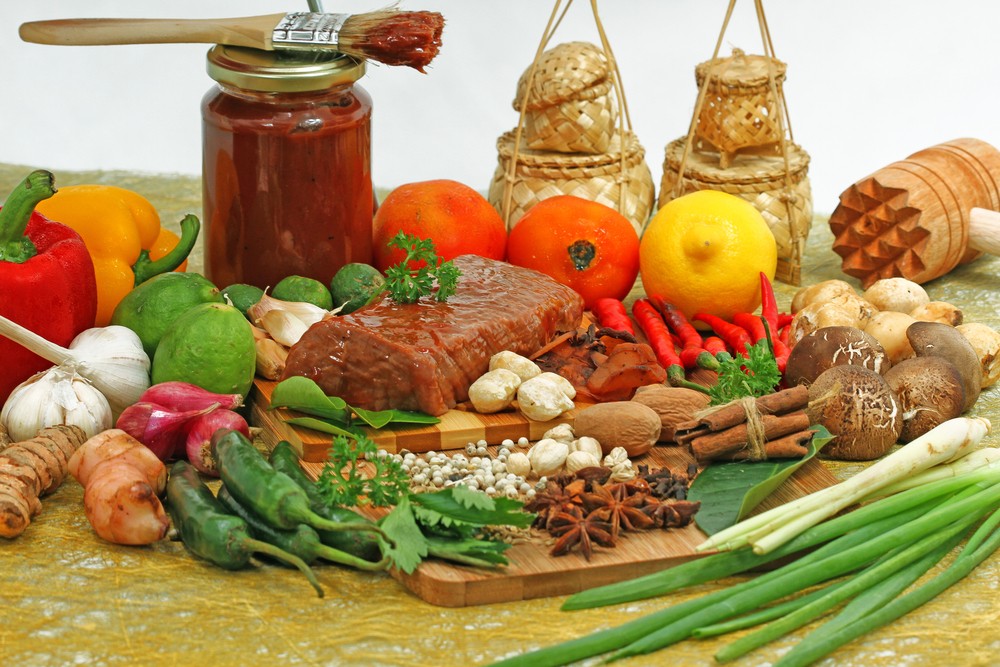Popular Reads
Top Results
Can't find what you're looking for?
View all search resultsPopular Reads
Top Results
Can't find what you're looking for?
View all search resultsFive must-try dishes when traveling to Banyuwangi
Banyuwangi in East Java offers a myriad of tasty culinary options, from rujak soto to nasi tempong.
Change text size
Gift Premium Articles
to Anyone
B
anyuwangi in East Java is not just home to breathtaking mountains and gorgeous beaches. It also offers a myriad of tasty culinary options, from rujak soto to nasi tempong.
Below are some of the dishes that must be sampled when traveling to the region, as compiled by kompas.com.
Rujak soto
For those familiar with rujak (sliced fruit and vegetables served with spicy palm sugar dressing) and soto (aromatic soup), the name of this particular dish may sound rather confusing. It is actually a combination of rujak sayur (vegetable rujak) and soto babat (beef tripe soup), resulting in a very unique taste.
The dish is comprised of various types of veggies, peanut sauce and petis (shrimp paste).
The peanut sauce is said to be mixed with salt, fried peanuts, brown sugar, tamarind fruit and pisang batu muda (a type of banana with seeds in it). That concoction is then combined with boiled vegetables like kangkung (Chinese water spinach), long beans, cabbage and fried tofu and tempeh. Usually priced around Rp 10,000 (less than US$1), it is often served alongside a bowl of savory beef tripe soup.
Read also: 10 must-try traditional dishes in Lombok
Pecel rawon
Those who order this dish in Banyuwangi should expect to receive a plate of nasi pecel (rice with nut-based sauce accompanied by vegetables, like spinach and bean sprouts) and a bowl of rawon (black nut soup). The dish also comes with tasty extras, like fried prawns, fried beef, fried cow lung and rempeyek kacang (peanut wafers).
Usually available for between Rp 5,000 and Rp 10,000, pecel rawon not only offers a rich taste of spices but also a rather sweet-yet-subtle taste of sambal pecel (pecel sauce).
Sego cawuk
Usually served during breakfast, sego cawuk can easily be found throughout Banyuwangi, especially in places inhabited by the Using tribe.
It consists of a serving of steamed rice and a bowl of soup with young grated coconut, grilled baby corn, cucumber, chili, red onion, garlic and some tamarind. The final result is a refreshing, spicy taste.
Sego cawuk usually goes for between Rp 7,000 and Rp 15,000, alongside pepes ikan laut (steamed sea fish wrapped in a banana leaf), kikil (cow trotter), dendeng (beef jerky) and telur pindang (Javanese braised egg).
Read also: Seven Indonesian dishes Obama and family dug into during vacation
Jangan kesrut
Famous for its bold red color and spicy, fresh aroma, jangan kesrut is accompanied by steamed rice, a piece of thick and crunchy tempeh and kala gepuk (shredded grilled chicken), a specialty of Banyuwangi. For the filling, the dish is usually offered with two options: meat or kikil.
The soup itself consists of various ingredients, such as large chili, cabe rawit (bird's eye chili), tomatoes, scallions, terasi (shrimp paste), salt, sugar and bilimbi.
Note that very few restaurants serve this dish. Try Warung Olgha at Jl. DI Panjaitan 49 Lateng if the you’d like to try it.
Nasi tempong
This dish is basically steamed rice with Banyuwangi-style sambal (chili sauce). The sambal is always fresh as it is only made-to-order.
Nasi tempong is usually served alongside a package of fried side dishes, like tempeh, tofu, perkedel jagung (corn fritters) and salty fish.
Priced between Rp 12,000 and Rp 15,000, expect to receive three plates when ordering this food, for the rice, various boiled vegetables and a few side dishes. (kes)











